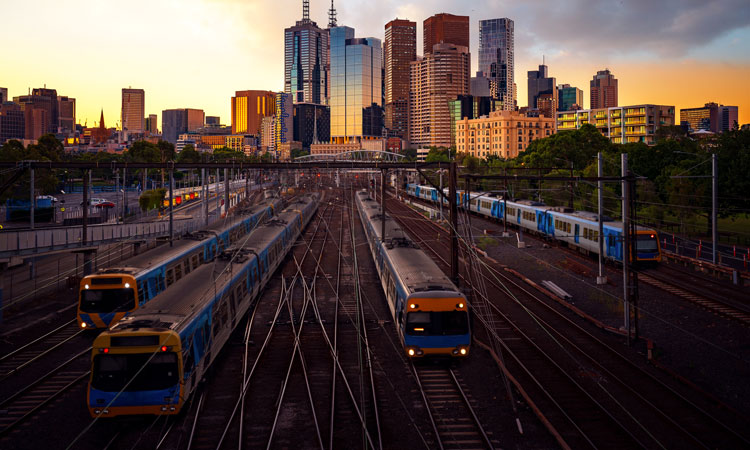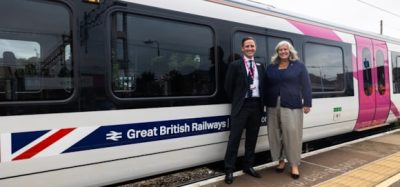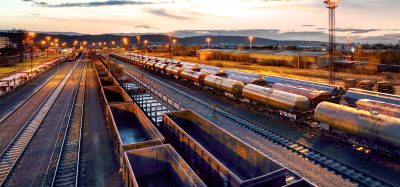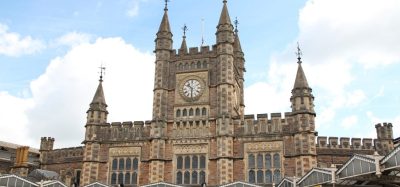A once in a generation opportunity to shape the future of rail in Australia
Posted: 29 November 2021 | Caroline Wilkie | No comments yet
The Australasian rail industry is experiencing a new wave of growth as it prepares for the new year, writes Caroline Wilkie, Chief Executive Officer of the Australasian Railway Association (ARA). With $155 billion in rail investment planned over the next 15 years, the industry is faced with a once in a generation opportunity to shape the future of rail in Australia for years to come. There are a range of issues that will need to be addressed to make the most of this time in the rail industry’s evolution.


Making the most of new investment
Rail construction activity is set to double the activity Australia witnessed at the peak of its mining boom in the early-2000s. That boom delivered significant benefits to the Australian economy, but also had to deal with the challenges that come with rapid growth. Effectively managing those challenges will ensure the rail industry can not just meet demand, but lay the foundations for enduring benefits for the economy and community as a result of this new wave of investment.
The Australasian Railway Association (ARA) has identified a range of areas for action to help make the most of this opportunity in its report on The Australian Rail Supply Chain. Effective planning and procurement, nationally-focused local content policies, and measures that support the adoption of technology and innovation are among the priorities identified by the report. The ARA is advancing action on these issues through the implementation of its Rail Supply Chain Blueprint, which was launched in 2021.
While many of these issues are not new to the industry, progress that can be achieved now could have an exponential impact on the projects to come over the next 15 years.
Securing people with the right skills
Infrastructure Australia’s (IA) market capacity and workforce skills supply reports released in 2021 confirmed skills development remains a critical issue. This was not news to the ARA, which identified a looming skills shortage for critical rail industry roles in its 2018 Rail Skills Capability Study. IA confirmed Australia’s infrastructure skills crisis is set to worsen over the next three years, with skills demand expected to be 48 per cent higher than supply by 2023. With a strong infrastructure pipeline already in place, and border closures associated with the pandemic limited travel to Australia and between jurisdictions, the availability of skilled workers to meet demand is a critical issue for industry. IA estimates four out of five infrastructure dollars over the next five years will be allocated to transport, meaning transport infrastructure will be in the eye of the storm as skills shortages hit. It is clear we must act now to meet the demand for skilled people in the coming years, particularly for critical roles such as signalling and system engineers. An immediate focus on training to meet short- and medium-term needs will be an essential part of this solution. The ARA’s work to develop national skills matrices and support improved collaboration as part of Australia’s National Rail Action Plan will also be vital. These crucial initiatives support a strong skills base over the long-term and help make it easier for rail industry employees to move more easily between projects and across the nation’s state and territory borders. The ARA will lead several new initiatives to help industry attract, retain and advance top rail industry talent in 2022, while also championing diversity across the rail workforce.
Promoting a return to rail
Rail played a critical role in keeping supply chains open during the pandemic, highlighting the importance of a resilient freight network that makes the best use of all modes of transport.
As is the case in so many parts of the world, Australia’s public transport services have been impacted by COVID-19 lockdowns and restrictions in 2020 and 2021. While the industry continued to provide public transport services for those who needed them even at the height of lockdowns, passenger numbers understandably fell sharply when restrictions were in effect. When Australia’s two largest cities, Sydney and Melbourne, both experienced extended lockdowns in 2021, national passenger numbers for the July to September quarter were 70 per cent below pre COVID-19 levels. While patronage has risen again as restrictions have eased, it will be imperative to welcome more people back to rail in 2022. The outstanding work of industry to ensure cleaning and hygiene measures are in place to support a COVIDsafe environment is to be commended, giving the community confidence in safe and accessible public transport services. The ARA is currently working with industry to support return to rail initiatives and promote the use of public transport in support of sustainable growth for the long term. With one commuter train taking 578 cars off the road, rail can help cities bust congestion and meet their net zero climate ambitions. As Australia’s populations continue to rise in the years ahead, rail must be a key part of our daily lives.
Moving more freight on rail
Just as greater use of public transport can deliver improved environmental outcomes for cities and towns, so too can greater use of rail freight.
Just as greater use of public transport can deliver improved environmental outcomes for cities and towns, so too can greater use of rail freight. The ARA’s Value of Rail 2020 report confirmed rail freight generates 16 times less carbon pollution than road freight. Combined with its ability to reduce congestion and drive improved safety outcomes, there are clear benefits to supporting mode shift to rail. Beyond these benefits, there is also clear demand. The national freight task is set to grow 41 per cent to 2030, with rail expected to meet three quarters of this new demand. Rail played a critical role in keeping supply chains open during the pandemic, highlighting the importance of a resilient freight network that makes the best use of all modes of transport. Despite this, achieving mode shift continues to be challenged. The ARA will implement its Rail Freight Action Plan to support greater use of rail freight in 2022. Three working groups have been established with a focus on competitive neutrality, mode shift, and interoperability and regulation. Consultation with industry has already been highly productive, and we look forward to progressing these issues in the year ahead.
Planning for the future
While these issues will all be significant areas of focus in 2022, Australia’s rail industry continues to plan for a strong and sustainable future. Meeting the demand of the years ahead will be just the beginning.


Issue
Related topics
Cargo, Freight & Heavy-Haul, Coronavirus/COVID-19, Funding & Finance, Infrastructure Developments, Sustainability/Decarbonisation, The Workforce








